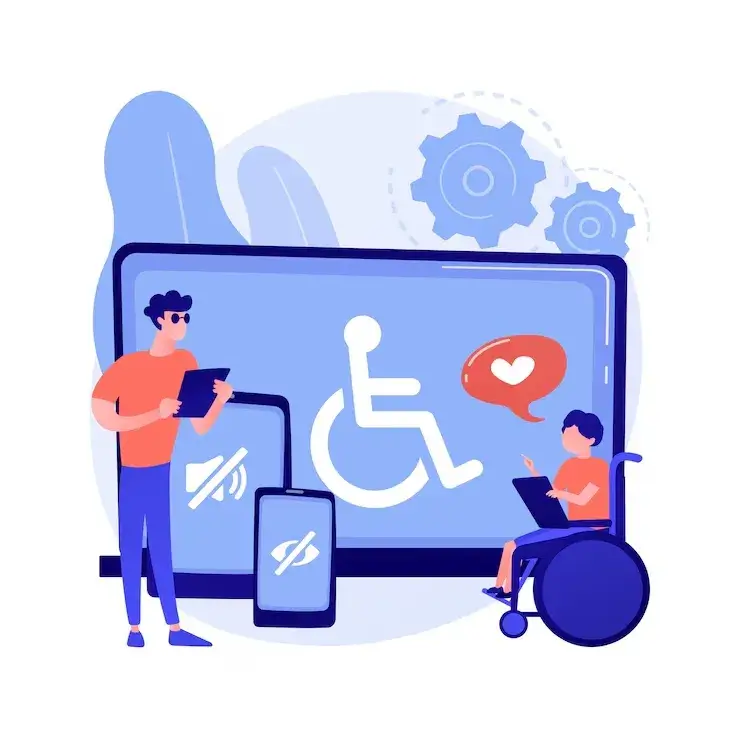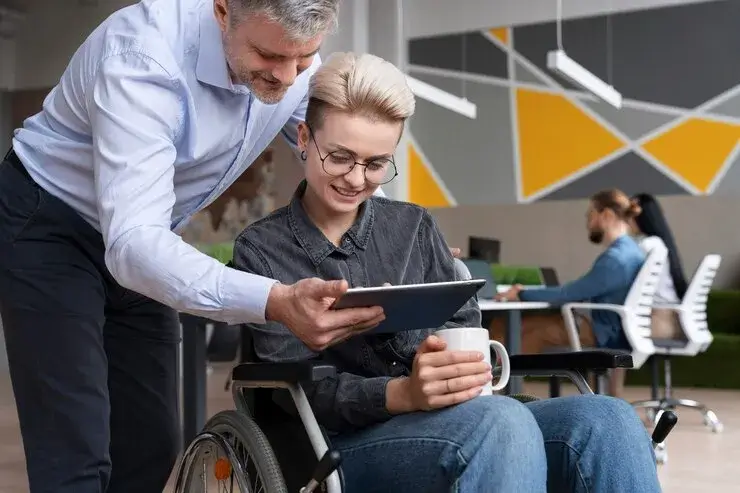What is assistive technology? What are some examples of assistive technology? Check out this blog to learn about it.
Mobility assists like walkers and wheelchairs, as well as hardware, software, and accessories that make it easier for individuals with disabilities to use computers and other information technologies, can all be considered assistive technologies.
Assistive devices can preserve or enhance a person’s independence and functioning, thereby improving their well-being. They allow people to participate in education, the labour market, and civic life in a healthy, productive, independent, and dignified manner.
A number of assistive products are available, such as a wheelchair, a hearing aid, a communication aid, a pair of spectacles, a prosthesis, a pill organizer, and a memory aid.

Why Should You Study Assistive Technology?
People with disabilities can now participate in activities at home, school, work, and in the community thanks to assistive technology (AT). It improves learning, functional, and developmental capacities.
It can take the place of skills that a person might not be able to acquire. For instance, even if a person cannot speak, AT enables her to express her thoughts, needs and wants. Anyone can benefit from AT, regardless of age.
Which Assistive Technology Should You Select?
The majority of the time, the option is one you make in consultation with a group of experts and consultants skilled in matching various assistive technologies to individual needs.
Family doctors, educators in both general and special education, speech and language therapists, rehabilitation engineers, therapists, and other professionals, including consulting representatives from assistive technology manufacturers, may all be included on an AT team.
You May Also Like: Is Technology Going To Save the World or Kill It?
What Kinds of Assistive Technology Are There, and How Are They Used?
These are just a few exemplars of assistive devices:
- Mobility aids like scooters, wheelchairs, walkers, canes, crutches, orthotics, and prosthetic devices can help you move around.
- Communication products can help with auxiliary and alternate communication. Communication boards, booklets, and cards are examples of equipment.
- Cognitive aids, such as electronic or computer-based aids, can be used to help people who struggle with memory issues, attention problems, or other cognitive difficulties.
- People who struggle to perform functional activities due to physical disabilities can benefit from self-care and environmental products. For example, shower and toilet chairs are absorbent materials.
- Products for improving hearing, such as hearing aids, are available.
- Mobility and sensory-impaired individuals can utilize computers and mobile devices with the use of hardware and software, including screen readers, speech recognition software, and screen magnification tools.
- Adapted grips for pencils, book holders, and automated page-turners are some of the tools that can help students with impairments participate in educational activities.
- People with hearing difficulties can watch movies, TV shows, and other digital content using subtitles.
- Mobility aids that are compact and powerful and allow people with disabilities to engage in sports and exercise.
- People with poor motor skills can eat, play games, and handle other tasks with the help of adaptable switches and utensils.

How can you Learn More About Assistive Technology Using the ATIA?
It is a non-profit organization that represents manufacturers, sellers, and service firms that provide assistive technology products and services.
Members of ATIA provide assistive technology for a variety of disabilities, including blindness, low vision, deafness, disabilities, communication disorders, Autism spectrum disorders, mobility impairment, mounting systems, learning disabilities, and cognitive disabilities, as well as augmentative and alternative communication devices (AAC).
You May Also Like: Top 10 New Technology 2024 Trends
Conclusion
Utilizing assistive technology can increase a person’s freedom while at the same time reducing their need for support, among other advantages. Beyond the person, the economy gains from Americans with disabilities’ ability to participate fully in society as taxpayers, customers, and employees.
You can get advice from assistive technology services to help you make a choice. Assistive technology services assist a person with a disability in selecting, purchasing, or using assistive technology devices.